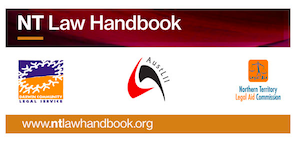-- JonathanMo - 14 Sep 2015
Copyright and Indigenous Knowledge
Indigenous art has often been commercially exploited in ways that are particularly offensive to indigenous peoples, who attach sacred significance to much of their art. In the past, indigenous artists and communities have had considerable difficulty taking copyright infringement actions. A major problem with the effective and just protection of indigenous knowledge is that the creative work or knowledge must still fit in with western ideas of intellectual property in general and copyright in particular, and the legislative structure which develops from it, that is, a personal property right. But copyright mechanism which are intended to function in a trade-related, private protectionist context, do not adequately respond to the essential nature of traditional knowledge and cultural heritage. The CA and other intellectual property laws still require a copyrighted work or creation to be in material form, to belong to an identifiable individual or group of individuals, and to be independently created rather than derived. See Bulun Bulun v R & T Textiles Pty Ltd [1998] FCA 1082; (1998) 86 FCR 244; 41 IPR 513 (Federal Court of Australia). Since much indigenous creation is derived, that is, handed down from generation to generation in an oral tradition, and is owned communally, it does not comply with the definitions of copyright as enshrined in the CA. For example, there is no copyright protection for rock art because the original artists who created the work are no longer identifiable or they created it too long ago for copyright protection to continue to exist. Australian law does not recognise the communal rights of an indigenous community in works of art. A further problem may arise in respect of transforming a work in an oral tradition into a material form, particularly where such transformation may be contrary to tradition and custom. However, there have been a few recent successes by indigenous communities or their representatives. See Milpurrurru v Indofurn Pty Ltd [1994] FCA 975; (1995) 54 FCR 240; 130 ALR 659; Bulurru Australia v Oliver (2000) 49 IPR 384. Recently there have been proposals for legal change in this area. One proposal include the development of a separate set of copyright and other intellectual property laws designed specifically to meet the particular characteristics of indigenous and traditional knowledge. Another mooted proposal includes amending current copyright laws to allow for:- extending copyright protection to oral works and non-assigned community works
- protecting traditional knowledge material through original and non-original database protection
- extending the moral rights provisions in copyright to traditional knowledge
- making greater use of international conventions on the protection of the rights of performers (for example, 1961 Rome Convention for performers, producers broadcasters, TRIPS, and the 1996 WIPO Performances and Phonograms Treaty)
- using a domain public payant system, under which royalties continue to be paid for the use of literary and musical works in the public domain
- using the droite de suite, a resale royalty under which an artist receives a share of the price paid for their original work from all sales subsequent to the first sale of the work by the artist.
 Copyright © by the contributing authors. All material on this collaboration platform is the property of the contributing authors.
Copyright © by the contributing authors. All material on this collaboration platform is the property of the contributing authors. Ideas, requests, problems regarding AustLII Communities? Send feedback
This website is using cookies. More info.
That's Fine

